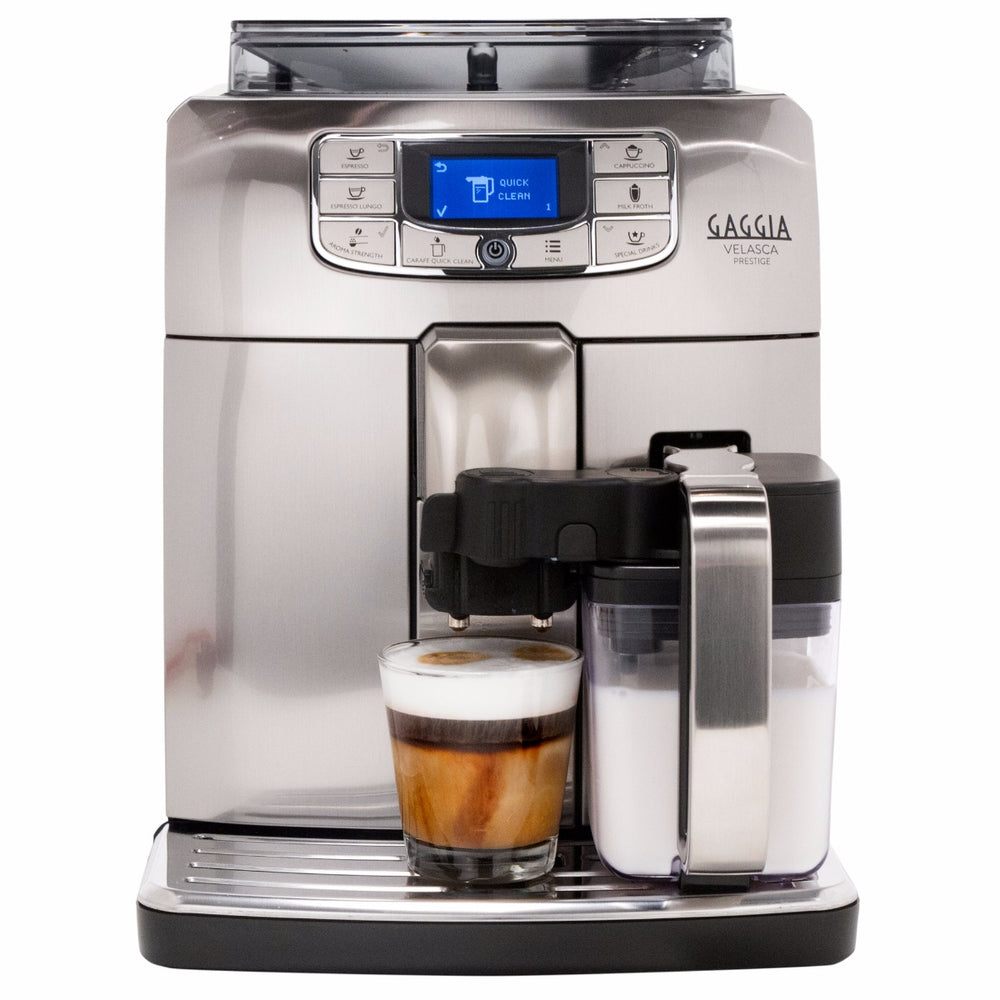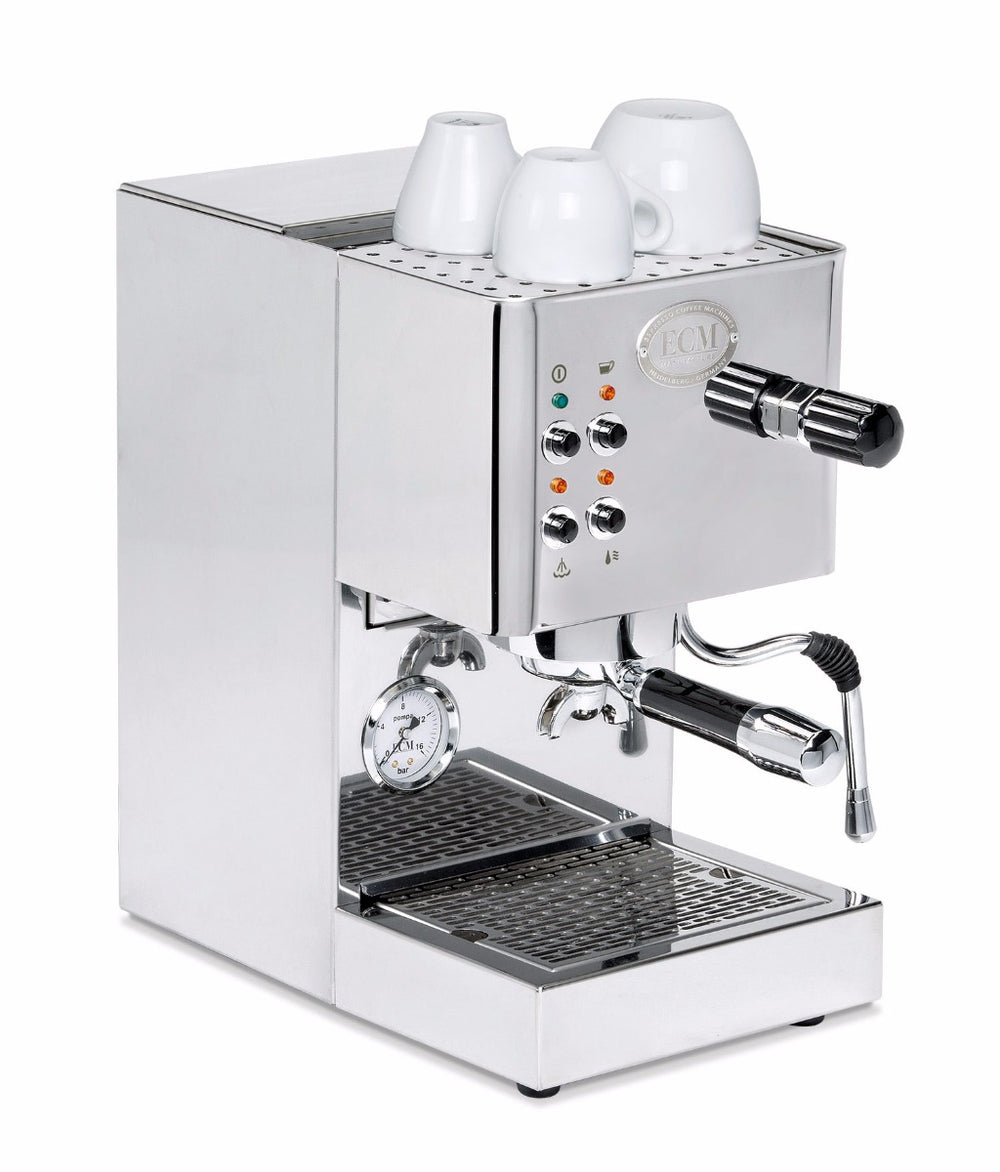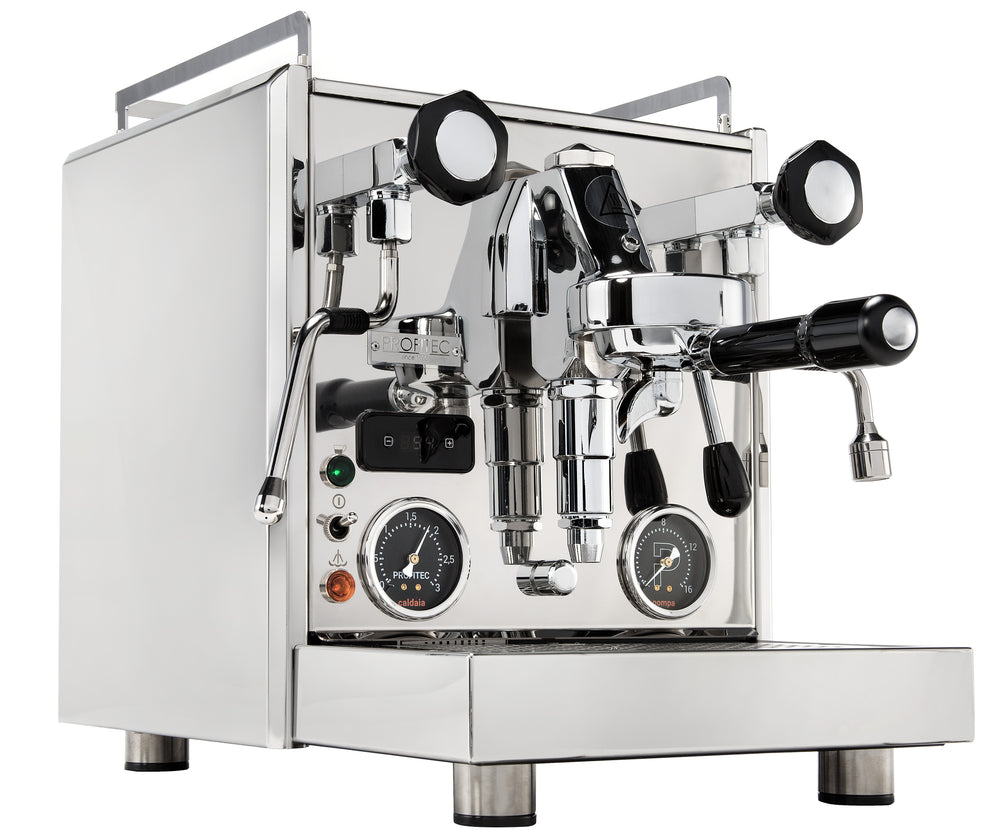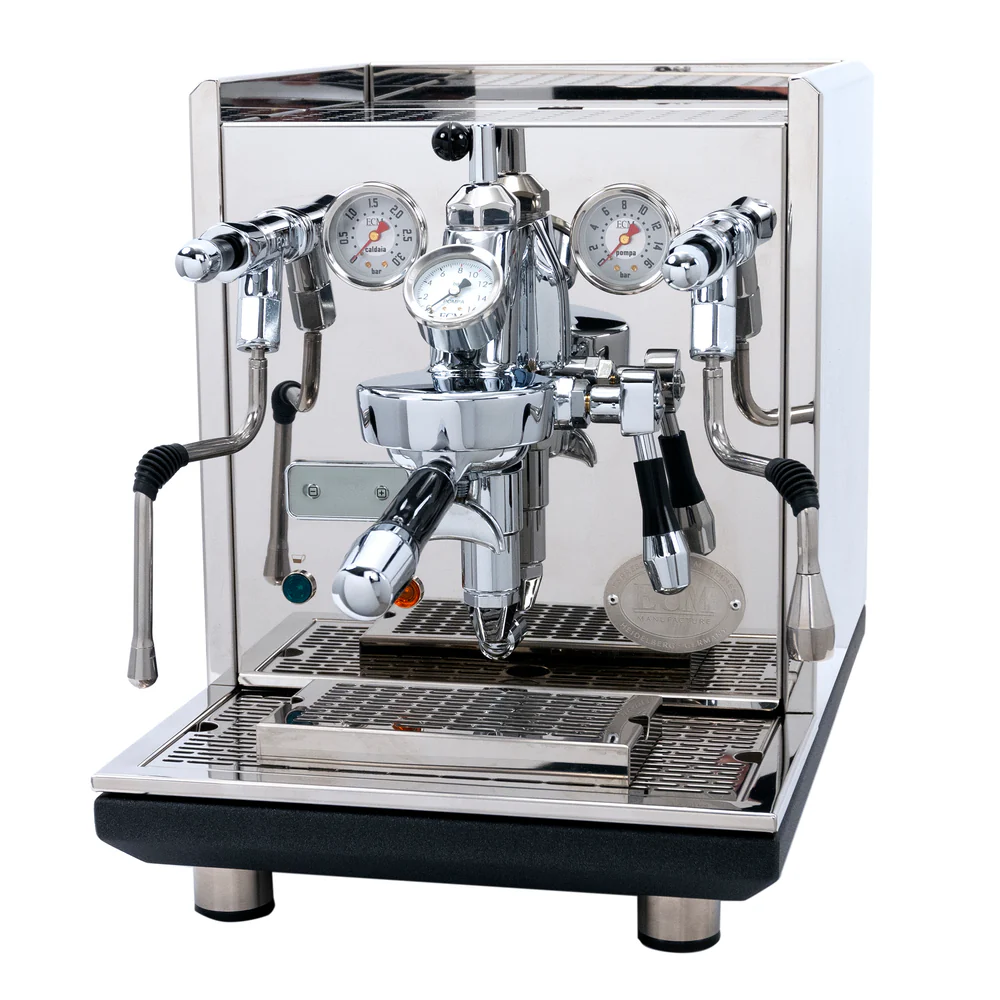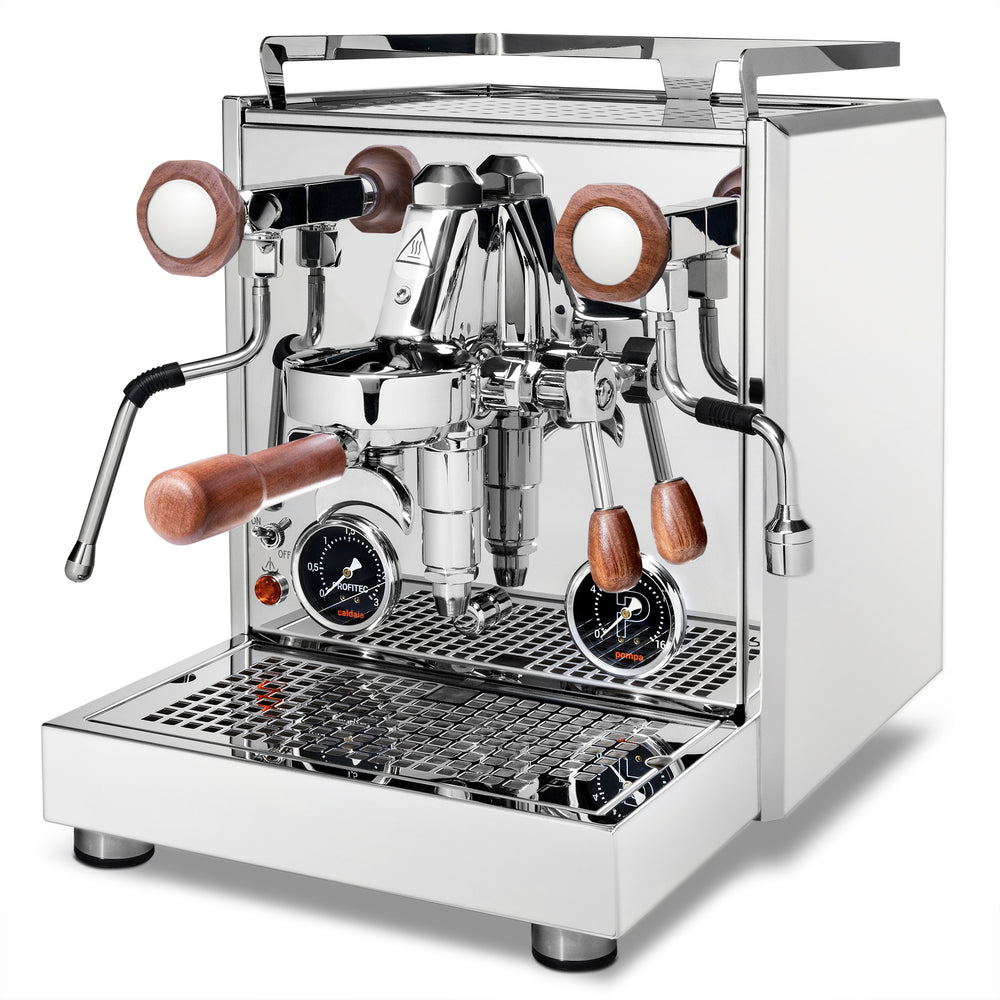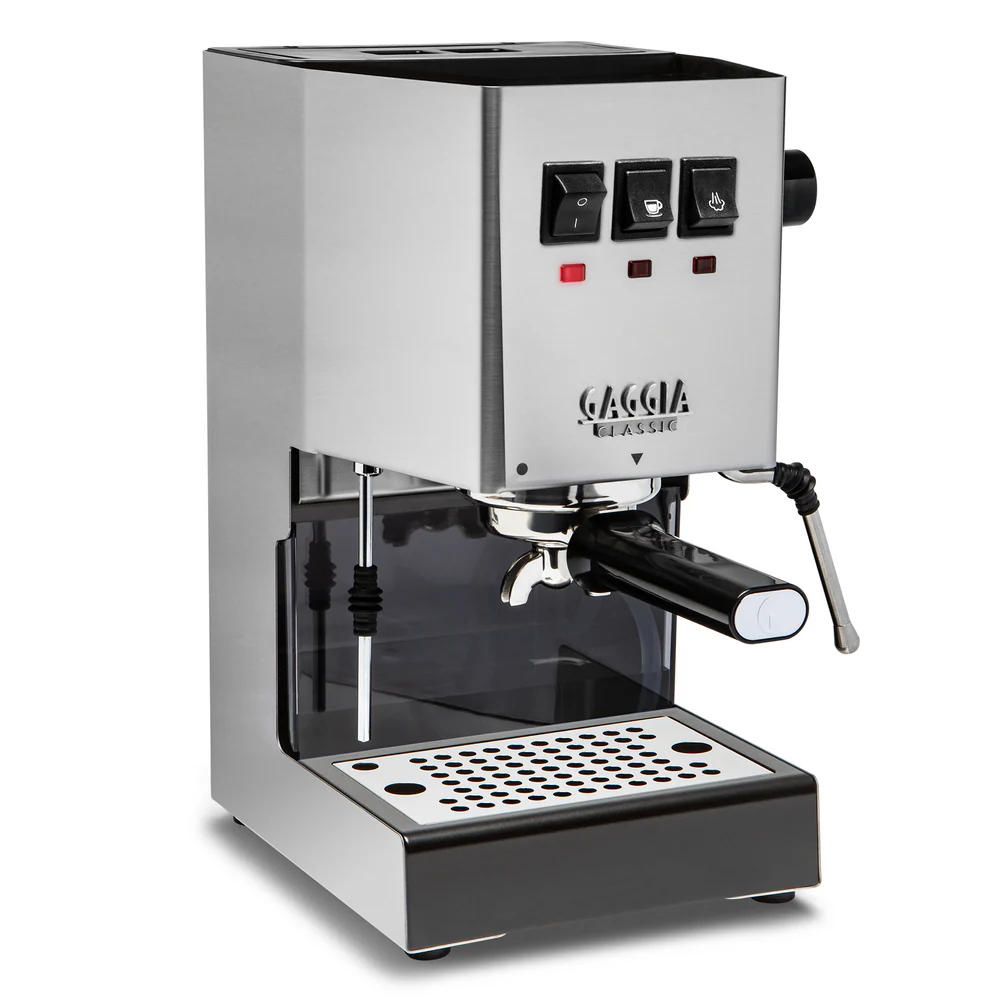The Complete Guide to Coffee and Espresso
Updated for 2022
What are Coffee and Espresso?
Coffee and espresso are incredibly popular caffeinated beverages and pretty big topics to discuss. A person’s coffee consumption is just as likely to be a personal ritual as it is a regular part of their daily routine. Whether you drink either coffee or espresso for caffeine or for enjoyment, this guide touches on topics ranging from brewing advice, different technology, coffee history, popular drinks, and our recommendations for some of the best equipment available. We invite you to take the deep dive. Follow us through the looking glass as we pull back the curtain on everything coffee.
Where's The Best Coffee Near Me?
If you’re like most people in America, you’ve probably wondered or even searched for the best coffee shop near you. Once you’ve found your favorite spot, it’s hard to go anywhere else, and at Whole Latte Love, for the past 20 or so years, we’ve been committed to the idea that that spot might just be in your own kitchen. As the Internet’s leading source for everything coffee, we have the products and the know how to get you what you need, and what you need to know to brew the best possible coffee at home.

How to Choose the Best Espresso Machine for Beginners
You might also be wondering in general, what’s the best coffee? While there’s no easy answer to that question, there are plenty of answers to how to make what’ve you been drinking better. In many cases, it means kicking the Keurig to the curb and investing in a quality coffee maker and grinder. In that same vein, if you’re an espresso drinker, you can ditch those Nespresso pods. We’re all about the bean, not just for the flavor, but for the economics as well. It’s a topic we’ve explored in our piece on The Long-Term Cost of a Keurig.
Chances are that while you’re familiar with coffee, you might be a bit hazier when it comes to espresso. A common misconception among the uninitiated is that coffee and espresso come from two different places and that you need espresso beans if you want to make real espresso. Some coffees will be labeled “espresso roasts” or “espresso blends,” but ultimately, it’s still all coffee. How the coffee is brewed will have the greatest impact on the resulting beverage in your cup, regardless of whether or not the word “espresso” appears on the bag.
Are Coffee Grinders Worth It?

Coffee grinders are an essential item for preparing coffee and espresso, a coffee grinder is a tool designed specifically for grinding roasted coffee beans into smaller, mostly uniform shaped pieces. The size and shape of the grinds you brew with has a tremendous impact on the way the coffee extracts. Grinding your coffee beans fresh before brewing is the most important thing you can do to make your coffee taste better. Coffee beans themselves contain volatile flavor and aromatic compounds that dissipate over time as the coffee releases CO2 gas. That is why freshly ground coffee will be much more flavorful when compared to pre-packed, pre-ground coffee.
CO2 gas is created as a byproduct of the roasting process. This gas is what gives espresso its crema, and what causes the signature bloom in pour over coffee brewing. Roasted beans will naturally release CO2 as they age, but grinding them accelerates this process exponentially. Nuanced flavors and aromas are lost with the release of the gas, making it important to grind and brew as closely together as possible. If you’re not quite sure how you’ll be brewing, a multi-purpose grinder might be the best place to start. An entire range of espresso focused grinders is also available for those looking to get into serious espresso brewing.

What are All Purpose Coffee Grinders?
How Much Caffeine is in a Cup of Coffee?
Something that’s more commonly known is that coffee contains caffeine. The elephant in the room, or more accurately the stimulant in the room, is widely consumed by the world at large, most often in the form of coffee or tea. Caffeine naturally occurs in plants, serving as a defense against insects while in humans it serves as a means to function in society. A typical cup of black coffee can have anywhere between 150 - 200 mg of caffeine in it while a double shot espresso is closer to 120 mg but we get how it can be a bit confusing. If you’re concerned about the caffeine but love the taste of coffee, that’s where decaf comes in. Decaffeinated coffee has had its caffeine removed by one of several processes so that it’s roughly 97% caffeine free.
One thing that is universal for all coffee beans is that they have to be roasted first before we can brew with them. Once they’ve been removed from the coffee cherry and processed at the farm, the beans are then purchased by coffee roasters who either blend multiple coffees together to achieve specific flavors or characteristics, or who choose to roast them unblended. Coffees that all come from the same coffee farm are referred to as “single origin” coffees, and much like wine, they are typically considered to be authentic representations of the flavor characteristics that are specific to the country where they were grown.
For a super short history lesson, coffee is believed to have originated in Ethiopia and has since spread to the rest of the world. All coffee, espresso or otherwise, comes from the same plant, and the beans aren’t beans at all, but the pit of a fruit called a “coffee cherry.” According to coffee lore, its origins date back to 850 AD when an Ethiopian goat herder noticed that his goats were full of energy after consuming the cherries. Our article on the History Behind Ethiopian Coffee helps shed some light on the history of how the coffee craze started.

Ethiopian Coffee: Where Coffee Began
On a more broad level, commercially harvested coffee comes from one of two species of coffee plants, Coffea Arabica (Arabica Coffee), and Coffea Canephora (Robusta). These two plants are fairly distinct from one another, both in terms of how they have to be grown and cultivated, as well as the resulting coffee that they brew. Generally, Arabica is more delicate, less caffeinated, and more expensive to grow, while Robusta is more harsh, more caffeinated, and more affordable.
Brewed coffee is a catch-all term that refers to pretty much any form of coffee preparation that isn’t espresso. The coffee is ground far more coarsely and the water is typically dripped slowly over the grounds, hence the nickname “drip coffee” that’s used to describe most American coffee. Other methods like pour-over which involves manually pouring water over the grinds are fairly straight to the point, while the more esoteric French Press involves steeping the grounds like tea.
How Espresso is Made
Espresso is a concentrated and incredibly potent form of coffee that is produced by an espresso machine instead of a coffee maker. It is a brewing method that originated in Italy near the turn of the 20th century and has since spread to all four corners of the globe. Espresso as we understand it today is defined by a layer of golden brown foam called crema, a phenomenon that did not emerge until the innovations by Achille Gaggia revolutionized the process in the 1940s. While much of the common knowledge and best practices surrounding espresso stem from its Italian origins, countries like the United States, Australia, and parts of the Asian South Pacific are considered to be at the vanguard of espresso’s continual evolution as old ideas and know-how are challenged.

Espresso and its characteristic layer of crema are the result of the specific process that is used to brew it. Regular coffee has water dripped through it, or has ground coffee steeped in hot water. Espresso is coffee that is brewed under pressure. It is ground much finer than regular coffee, and in most cases a pump is used to push water through the coffee grounds. The resulting brew is much more concentrated, with more potent flavor, more dissolved solids, and more caffeine, all packed into a much smaller cup.
What are Espresso Machines?
You might make coffee in a coffee maker, but espresso is produced by espresso machines. Espresso machines are devices or appliances that are specifically designed to brew espresso and not regular coffee. Using a high pressure pump, a boiler, and something called a portafilter, which is Italian for "filter holder," espresso machines force hot water through finely ground coffee at high pressure. The pressurized environment is what causes the crema to form and what makes espresso so potent.
When it was first dreamt up, espresso emerged from the desire to produce a concentrated coffee beverage fast. The etymology of the name itself refers to its identity as a fast brew method, with iconic imagery such as Victoria Arduino’s classic poster depicting a man hanging from a moving train to catch a shot in his cup. Initial designs used steam to power the extraction, and the brewing pressure was considerably lower.
Espresso is a distinctly Italian take on coffee brewing that took off in the early 1900s with innovations introduced by Luigi Bezzera to the existing coffee makers of the time. The process was eventually updated by the espresso pioneer Achille Gaggia who introduced the concept of pump driven brewing which redefined espresso by introducing the signature “crema” that it is known for today. Espresso itself is a story of innovation and invention, one that continues to be told even to this day.

Espresso for Beginners: History and Common Misconceptions
If you, like many of our visitors are in the market for a new espresso machine, here’s a handpicked list of our most popular espresso machines:
Most Popular Espresso Machines
-
- Compact elegance with stainless steel accents
- Pannarello steam wand for effortless cappuccinos
- Intuitive, user-friendly interface
-
- Removable one-touch milk frothing carafe
- 10 grinder settings to dial in your perfect shot
- Programmable shot volume, strength, temperature and pre-infusion
-
- Compact and powerful brewing with a brew pressure gauge and external OPV
- Elegant German craftsmanship with polished stainless housing and commercial components
-
- Eye catching color panel cutouts and signature Rocket styling
- Powerful steam pressure, E61 group, and pre-infusion chamber
-
The Profitec Pro 500 PID with Flow Control is a highly capable heat exchanger espresso machine, packed with commercial parts, a quiet vibration pump, and equipped to compete with more expensive machines. The 2022 update moves the PID controller with Shot Timer so it’s no longer hidden, making it easier to accurately adjust the temperature and time your shots for your brewing process.
-
- Best value dual boiler performance
- Impeccable German design
- Unique black pressure gauges and engraved drip tray
-
- Legendary German craftsmanship
- Best-in-class steaming and brewing performance
- Flow control valve allows for manual control of water flow during extraction
-
- Best value dual boiler performance
- Impeccable German design
- Unique black pressure gauges and engraved drip tray
-
- Updated frame, rocker switches, and pump mounts for a quieter and more streamlined experience
- Commercial steam wand for texturing latte art quality milk foam
-
- Updated frame, rocker switches, and pump mounts for a quieter and more streamlined experience
- Commercial steam wand for texturing latte art quality milk foam
Cappuccino and Macchiato
When espresso and frothed milk are combined, something magical happens. What you might not have known is that espresso is the base ingredient for incredibly popular drinks like the cappuccino and macchiato. In order to produce these drinks, most espresso machines have the ability to produce steam in addition to espresso. The steam is used to change the temperature and the texture of the milk, by stretching proteins and injecting air into it. Nearly all of the most popular drinks you’ll find at your local cafe are made by combining espresso with milk in different ratios and textures. On semi-automatic machines this is almost always accomplished by manually injecting air into the milk using something called a steam wand.
On lower end espresso appliances, shortcuts are often taken with the inclusion of auto frothing designs where the wands inject the air automatically, require little to no skill other than holding the pitcher in place while frothing. On more professional style machines, commercial style steam wands are used instead. Compared to their auto-frothing counterparts, commercial steam wands are trickier to master, but ultimately offer tighter control over the texture of the milk, allowing for much higher quality milk foam to be produced.
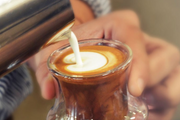
Milk for Lattes and Cappuccinos
Once you’ve figured out how to froth milk, all that’s left is the fun part, making drinks! Check out our list of popular espresso drinks below to get a better grip on some of these barista favorites, including the cappuccino and macchiato:
10 Popular Drinks Your Espresso Machine Can Make
1. Espresso
Okay, this one may seem a bit redundant, but understanding what espresso is will help you understand its role in the rest of the drinks on this list. Espresso is a highly concentrated shot of coffee that is produced under high pressure. Depending on the barista or shop, an espresso is typically 1.5 to 2 oz in volume with a typical double shot using 18 g of coffee. The signature crema on top is the result of the coffee being super saturated with CO2 that is released during extraction which forms a layer of foam on top.
2. Cappuccino
Cappuccinos are balanced drinks that typically consist of 2 oz each of espresso, steamed milk and milk foam. Served in a cappuccino cup, these drinks are perfect for those who enjoy a bit of airy foam in addition to steamed milk. If you’re a fan of the foam, ask for a dry cappuccino, it swaps out all of the steamed milk for milk foam. In the United States, people enjoy cappuccinos all throughout the day, while in Italy, it is typically viewed as a breakfast drink.
3. Macchiato
There are actually two types of macchiatos, but we’re condensing them into one entry. The lesser known espresso macchiato is a shot of espresso with a dollop of milk foam. Translated from Italian as “stained” or “spotted,” the espresso macchiato is a perfect dessert drink for those who want a bit of caffeine but not a lot of liquid. The sweetness of the milk is a great compliment to the intense coffee flavor of the espresso with the foam adding a touch of decadence. Its much more popular latte counterpart, the latte macchiato, involves steaming equal parts milk and milk foam and then adding a shot of espresso for a beautifully layered drink.

What is a Macchiato?
4. Americano
Invented for American soldiers stationed in Europe during WWII, the Americano was an attempt at emulating American coffee with espresso. To make one, you simply add hot water from your espresso machine to the espresso that you just brewed, easy peasy. The amount of water used can be modified to make it as bold or as delicate as you like. You can also flip the script by brewing espresso over hot water, making a drink that is referred to as a Long Black.
5. Latte
Lattes are one of the most popular coffee drinks, period. Consisting primarily of espresso and steamed milk, with just a touch of foam, the perfect latte, complete with latte art, is a foundational piece of any barista’s coffee knowledge. A common take combines 2 oz of espresso with 10 oz of steamed milk, served in a latte cup.

Beginner's Guide to Latte Art
6. Ristretto
A ristretto is an even more intense and powerful shot of espresso. It uses the same amount of coffee, but is ground finer and uses about half as much liquid. Because the shot is pulled more quickly, the balance of a ristretto will be different than an espresso, containing a higher quantity of fast extracting components.
7. Flat White
A flat white is more or less a cappuccino sized latte, combining 2 oz of espresso with 4 oz of steamed milk. The flat implies the lack of any foam, meaning it’s all steamed milk like a latte but with far less volume over all for a more coffee forward flavor. While the debate rages on over its exact origin, the flat white is believed to have made its first appearance in either New Zealand or Australia.
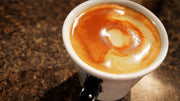
Flat White Espresso Drink
8. Cortado
A cortado is an espresso beverage that’s equal parts espresso and steamed milk. Unlike a Flat White which is on part espresso, two parts milk, a cortado is ⅓ less liquid, meaning that it is served in a smaller cup and is a smaller beverage overall. It’s the ideal drink for somebody who enjoys the flavor and mouthfeel of a latte, but wants a bit more coffee flavor and considerably less liquid.
9. Espresso and Tonic
A popular summertime drink that combines coffee science with cocktail science, Espresso and Tonic is a refreshing take on the classic Gin and Tonic. For best results, use a bright, fruity coffee like a Kenya AA or an Ethiopia natural. The interplay of the fruity and acidic flavors with the bubbly, bittersweet tonic is amazing. Add a squeeze of lime, and a lime to garnish if you’re feeling fancy.
10. Affogato
An affogato is a dessert drink that combines a shot of espresso with a scoop of vanilla ice cream. The contrast between the espresso and the ice cream, hot and cold, bright and smooth, make for a delicious treat that you can add to your menu.

Tiramisu Affogato
Super-Automatic Espresso Machines
Designed to take the time and skill out of brewing espresso, super-automatic espresso machines will grind, tamp, and brew your espresso at the touch of a button. Equipped with grinders and internal brewing units, these machines grind beans fresh, compact them into pucks, and brew. Depending on the brand and model, super-autos also offer a variety of milk frothing solutions, some manual and others completely automatic.
Super-automatic espresso machines can feature manual milk frothing wands, but oftentimes use fully automatic systems that require zero manual intervention from a user. These auto-frothing devices come in a variety of styles, with some capable of producing a range of milk textures while others produce exclusively airy foam for cappuccinos. Super-automatic espresso machines with manual steaming wands can make any of the drinks listed above, while those with with auto frothing devices often have a predetermined number of drinks that you can prepare. Check out our top 5 picks for super-automatic espresso machines.
How to Make Coffee

Unlike espresso where the different types of drinks are the result of combining it with milk of differing quantities and textures, different types of coffee are the result of whatever equipment was used to brew it. As a result, a wide variety of brewing methods are enjoyed by coffee drinkers, each with its own unique characteristics and nuances. For more information on the various devices available, check out our comprehensive guide on coffee makers, otherwise, keep reading for a look at some of the more popular types of coffee you brew:
How a French Press Works
French Press coffee is a very rich, full-bodied type of coffee that is brewed using a device called a French Press or Cafetiere. The coffee is brewed in a manner similar to tea, with large, coarse coffee grounds being steeped in water. This type of brewing is referred to as “immersion brewing” which means that the grounds are immersed in water that is not actively draining through them. Once the coffee has steeped for long enough, the grounds are separated from the coffee via a wire mesh screen that is pressed down by a plunger. The resulting brew is typically richer than traditional coffee because the press’s metal screen allows far more of the coffee’s natural oils to remain than a traditional paper filter.

How to Use a French Press
How Cold Brew Coffee Works
Cold brew is quite popular, enough so that we put it higher on this list for you. Cold brew is coffee that is brewed and extracted using cold water instead of hot water in a process that typically takes 12 - 24 hours. Cold brew differs from Iced coffee by being even less acidic, maltier, and more flavorful. Check out our article for even more detail on these two popular styles of coffee.
How a Percolator Works
Percolator coffee is fairly old school, using a brewer called a percolator to circulate water through a basket of ground coffee in order to brew. Traditional percolators are typically made entirely of metal and are placed on top of a stove or other heat source to boil water. Electric percolators use a heating element to boil the water internally. Boiling the water causes it to flow upwards to the top of the percolator where it is dispersed over a basket of coarsely ground coffee. The then brewed coffee drains back down into the boiling water at the bottom and the process repeats itself. Percolator coffee is characteristically very hot and very strong, though some say that the boiling water and circulation of water cause the grounds to be over extracted.
How Pour Over Coffee Works
As its name suggests, pour over coffee is brewed by pouring water over a bed of ground coffee, which then drains through a filter and into a cup, carafe, or other serving vessel. In some cases, a device called a dripper is used to hold the coffee filter as is the case with Hario, while other brands like Chemex feature two-in-one dripper carafes where you brew directly into the container you pour from. Due to the wide variety of filters and drippers available, pour over coffee can range from very clean and crisp cups, to more full bodied and rich coffee.
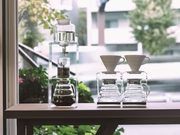
How to Make Pour Over Coffee: The Complete Beginner's Guide
How an AeroPress Works
AeroPress coffee can be a bit tricky to pin down because the AeroPress itself is a very versatile tool when it comes to brewing coffee. At its most basic, the AeroPress is filled with ground coffee and then with hot water. The water is then plunged through the grounds at high pressure, leading some to draw comparisons between AeroPress coffee and espresso. By varying the grind and the amount of ground coffee you use, an AeroPress can produce a wide variety of coffees, ranging from a very concentrated cup similar to espresso, to a typical drip style coffee. When using the popular “inverse” method, the AeroPress becomes an immersion brew method which more closely resembles a French Press.
How a Moka Pot Works
Often referred to as stovetop coffee and/or stovetop espresso, moka pots produce a very hot, very potent cup of coffee. The fine grind used for moka pots, coupled with the relatively low volume make it easy to refer to the coffee they produce as espresso, but it’s actually quite different. A moka pot is actually closer in design to a percolator, with a bottom carafe full of water that is brought to a boil, a basket of finely ground coffee above it, and a carafe with a spout and handle on top. A gasket is used to create a seal between these two halves, but the pressure generated by boiling water doesn’t come anywhere close to the 9 bar produced for espresso brewing. Once the water starts boiling, it is pushed up through the grounds, but unlike a percolator, it's a one-way trip and the then brewed coffee is dispensed into the top half of the pot for serving.
How Syphon Coffee Works
Brewing syphon coffee can feel like a bit of a science experiment, but it’s worth the effort if you’re interested in trying some particularly unique coffee. Similar to a percolator, syphon coffee relies on boiling water in order to brew, with the syphon itself comprised of a bottom globe that is filled with water and a top carafe that is filled with ground coffee. The two halves are connected, with a filter screen between them that allows water to travel up into the carafe but keeps the grounds from flowing down into the globe. Syphon brewing typically uses a very coarse grind, and produces a more tea like coffee that works well to bring out fruitier notes.

What is Siphon Coffee: What You Need to Know About Siphon Coffee Makers
How Drip Coffee Works
Drip coffee is a less than common nickname for coffee. We use it to distinguish regular coffee from espresso, referring primarily to coffee that has been brewed with a coffee maker. The name is primarily a description of how the coffee itself is being brewed and refers to the dripping of hot water over the grounds. I’ve you’ve ever made “regular” coffee, you know the drill. You put a few scoops of your favorite coffee into a filter, fill up the coffee maker, and press brew. While it may seem hard to screw up, keep reading for our 5 best coffee makers, and some pretty simple suggestions for how to improve your coffee with minimal effort.
Top 5 Best Coffee Makers
Technivorm Moccamaster KBT741
"A lot of web research went into the decision to purchase Technivorm. What sealed the deal was talking with W.L.L sales who gave honest feedback on my questions relating to the product and my needs" - Sukhi B.
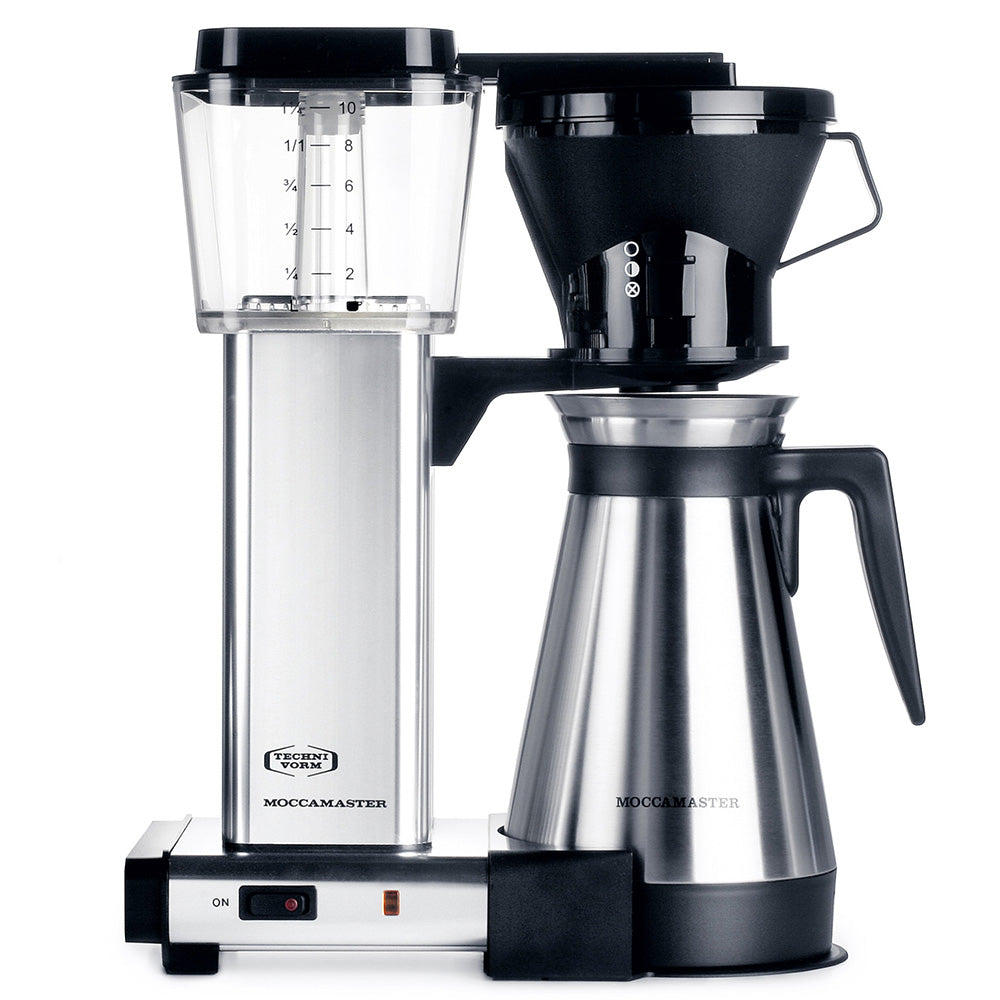
$349.00
Braun KF9070SI MultiServe
"The MultiServe is great for brewing regular coffee, or treating yourself with the over ice function for special occasions. Love the multiple brew sizes." - Ed. M
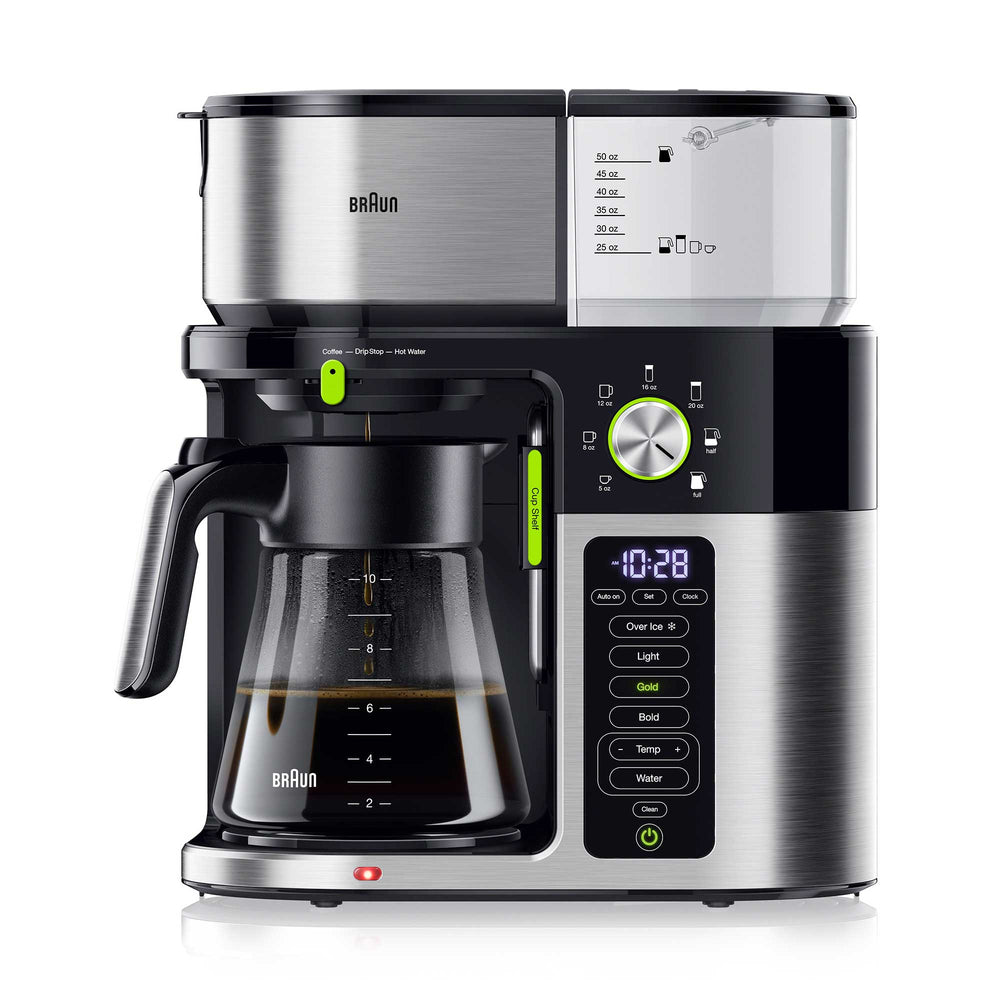
$179.95
Behmor Brazen Plus Coffeemaker
"Awesome coffee maker. Makes coffee that tastes just like the aroma of the coffee beans. Not bitter or thin. LOVE IT! As usual Whole Latte Love has done it for us again!" - Carla B.
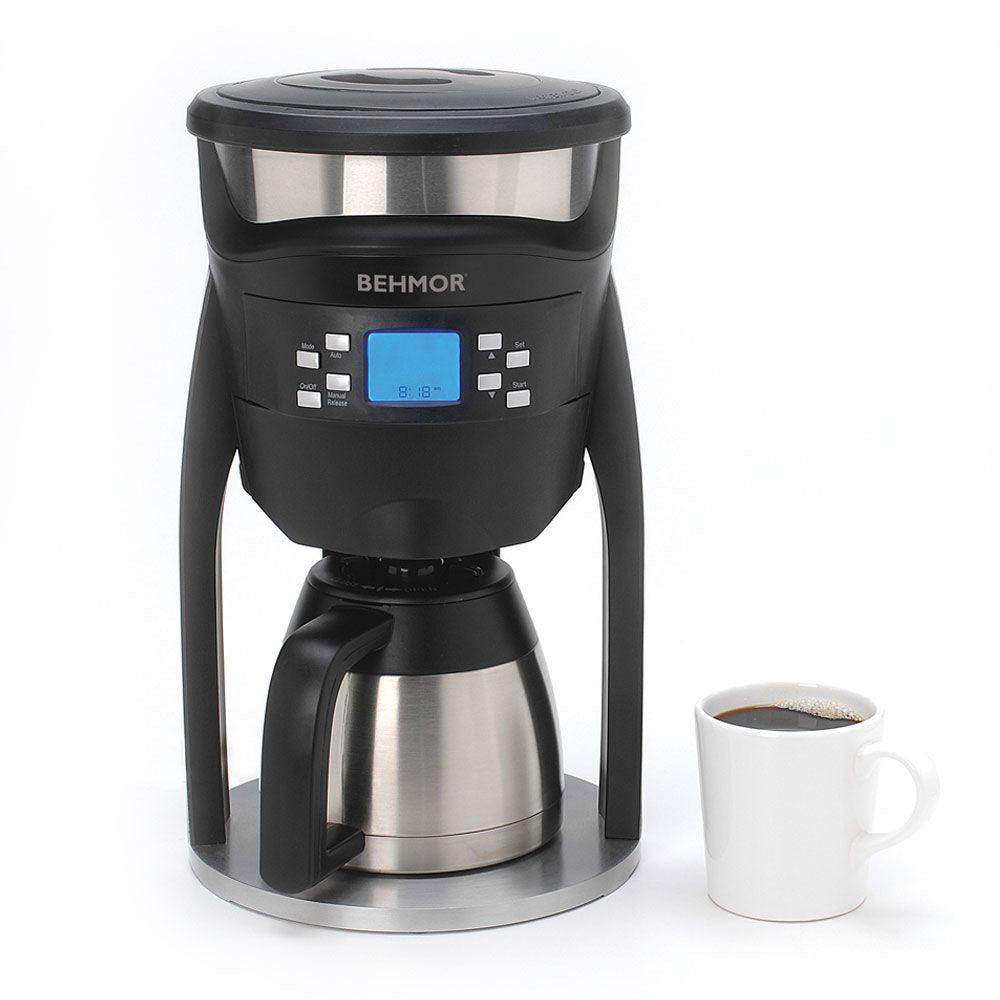
$169.00
Bonavita Connoisseur 8-Cup One Touch Coffee Brewer
"Just what I was looking for. Simple and to the point. Fantastic coffee maker." - Cynthia G.

$189.99
Breville BDC450BSS Precision Brewer
"Well-made, very quiet machine delivers consistent and excellent coffee, and thermal carafe keeps it piping hot." - Gary J.

$329.95
No matter how you choose to brew, consider the following best practices when it comes to getting the best results out of your next brew:
Top 5 Best Practices for Coffee and Espresso
1. Use Fresh Coffee
Whether you’re preparing it as brewed coffee or espresso, freshly ground beans will always produce a more flavorful and aromatic cup. Compared to pre-ground coffee, pods, or capsules, freshly ground beans retain more of the volatile aromatic compounds and CO2 that is naturally released by beans as a byproduct of the roasting process. Grinding fresh and properly storing your beans is key to producing a more flavorful and aromatic cup, regardless of how you brew.
2. Buy a Suitable Coffee Grinder
One of the most commonly overlooked aspects of brewing coffee or espresso is the grinder. Using freshly ground beans will already make a huge impact on the quality of your coffee, but it’s important to make sure that the grinder is a suitable match for your brewing method. A French press or percolator might be fine with a cheap burr, or even blade grinder, but precise pour over brewing will require far more variability in grind size. In that same vein, brewing espresso with a true commercial style espresso machine instead of a pressurized espresso appliance will require grinders with more uniform grind size and precision grind control Check out our piece on “How your Grinder Affects Coffee Flavor” for more detail on the topic.

3. Drink What You Like
Coffee is even more complex in its aroma and characteristics as wine, and that’s before you throw in the myriad ways you can prepare it. When it comes down to it, no matter how you brew your coffee (or what you put in it), the most important thing is that you like how it tastes. At Whole Latte Love, we’ve sorted a number of our coffees into different “flavor families” to give you a sense of their predominant characteristics. A great place to start is with this article here that serves as a road map for various roasts and blends you’ll find on our site.
4. Brew at the Correct Temperature
One of the most important variables in brewing coffee or espresso is temperature. From boilers to heating elements, to hot plates, to mugs, proper brewing and serving temperatures have a major impact on the quality of your drink and its overall flavor. While coffee makers and espresso machines vary on how they achieve temperature stability, we have an assortment of both that produce great results. Check out our list of 5 SCA certified coffee makers, or take a look at some of our popular PID heat exchange espresso machines.
5. Pay Attention to Water Quality
Another area where brewed coffee and espresso overlap is the necessity for quality water for brewing. Both brewed coffee and espresso will taste better when the water is clean and free of contaminants. Additionally, with proper filtration you can protect your coffee maker or espresso machine from the buildup of calcium or other mineral deposits, known as “scale” in the coffee world. We have partnered with BWT to offer a wide range of water filtration options for both coffee and espresso that produce great tasting water that won’t damage your machine.

BWT Water Filters for Espresso Machines
Putting Milk in Coffee
Coffee and milk are one of those classic pairings, taking their well deserved place among such stalwarts as peanut butter and jelly, salt and pepper, Batman and Robin… you get the idea. Combining your coffee or espresso with dairy opens up a huge world of possibilities, in fact, the majority of espresso beverages that exist are simply combinations of espresso and some variant of milk. On the other hand, coffee is often combined with creamer or milk but instead of becoming a cappuccino or latte, it’s still just coffee.
Unlike espresso, where milk is heated, stretched, frothed, and folded into itself, with coffee it’s often as simple as opening a carton and dumping it in. Often times the intent is to help cool the coffee to a drinkable temperature, and if that’s the case, it’s likely that you’re drinking it for the caffeine and not for the flavor. The alternative, sugary flavored creamers can substantially alter the flavor of your coffee to the point where you’re not even tasting it anymore and you are in fact drinking a milkshake. Over time, the extra sugar and calories can take a toll on your waistline so it's important to note that your coffee can taste better without them.

Broccoli Brew - A Fun Way to Increase Your Veggie Intake À La Latte
If you are making this kind of utilitarian choice, remember that many problems people have with traditional black coffee, bitterness/astringency, temperature, and general flavor can be corrected by making some adjustments to what you’re buying and how you’re brewing. Refer back to our list of 5 best practices if you’re looking to ditch the cream and sugar solution when it comes to better tasting coffee.
Differences Between Coffee and Espresso
Now that we’ve covered the basics, we can take a closer look at how brewed coffee and espresso differ from one another. Knowing that the same beans can be used for both methods and that the temperature generally falls around 200 degrees, the key difference lies in the grind and in the brewing pressure. Brewed coffee has a fairly wide range of grind sizes, ranging from extra coarse for methods like percolator coffee and French press to medium coarse for a typical automatic coffee maker. Espresso on the other hand has a fairly narrow range of grind size, but within that narrow range, minor adjustments can have a major impact on your extraction. Finding the right for your espresso is referred to as “dialing in,” and you can read more about it here.
While there is no such thing as an “espresso bean,” certain coffees are roasted or blended in a specific way that makes them taste better when brewed as espresso. Because espresso is the main brewing method used in Italy and Europe, nearly all of our Italian coffees are suitable for use in espresso brewing. Here is a list of our top five recommendations for espresso beginners:
Top 5 Espresso Recommendations
1. Lavazza Super Crema
Lavazza’s Super Crema is our most popular espresso blend that we sell. It is a welcoming 80/20 blend of Arabica and Robusta coffees that balances the robustness one expects from espresso with a flavor profile of smooth, drinkable notes. Super Crema blends beans from Brazil, India, Colombia, Indonesia, and Vietnam and features predominant notes of honey and almonds.
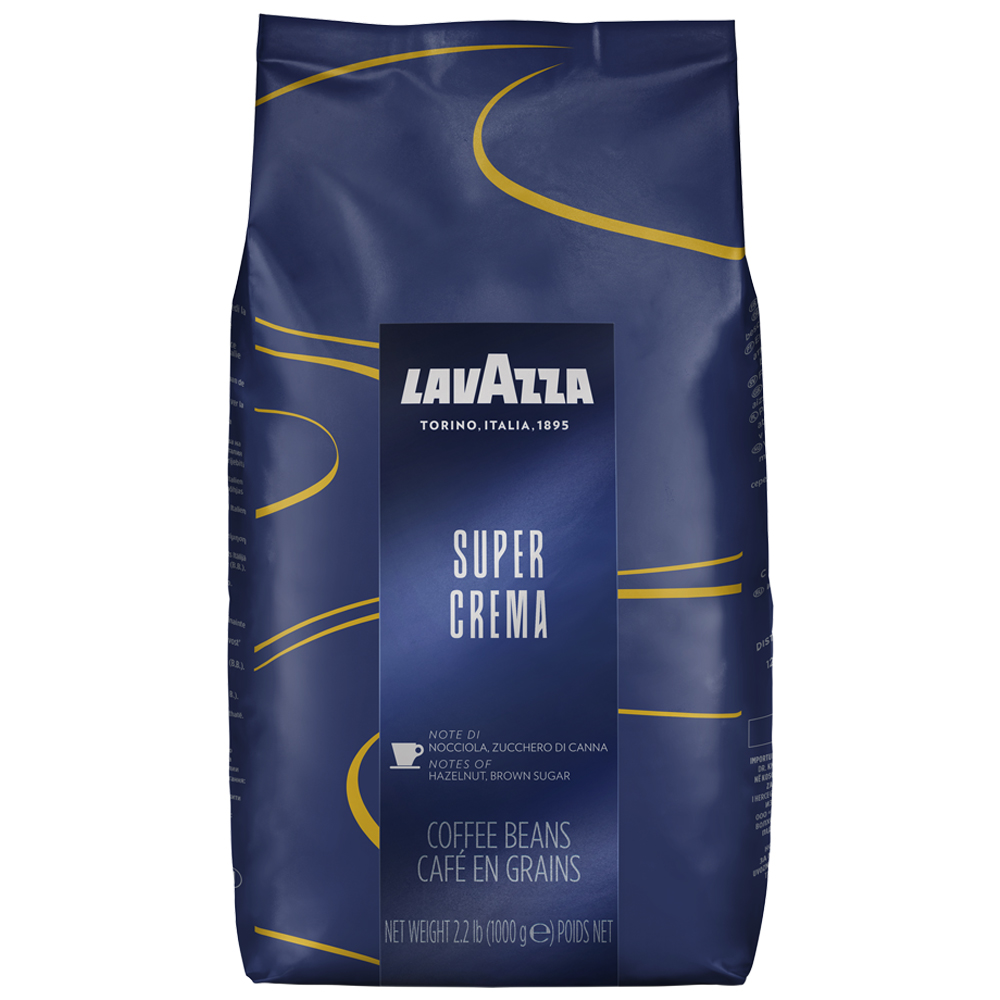
$23.99
2. Maromas Orphea
Blended by the experts at Maromas Premium Coffee, Orphea is a crowd pleaser, known for producing an incredible volume of crema. Orphea blends Arabica and Robusta coffees from Central America and India, featuring a chocolatey profile with notes of toffee and nut. It’s worth noting that this particular blend is a personal favorite of Marc’s and is featured in many of our YouTube videos.
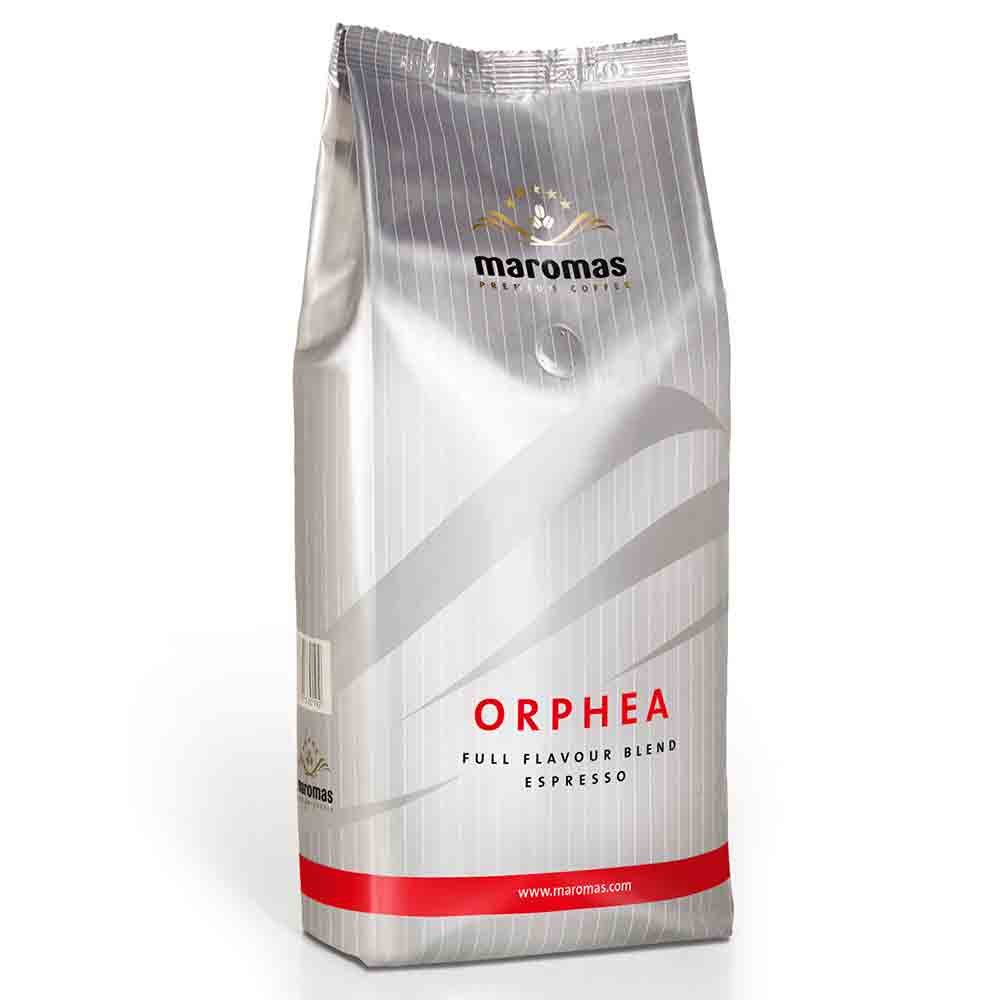
$21.29
3. Joe Bean Espresso Blend
Joe Bean’s Espresso Blend is a custom coffee that was blended for us by Joe Bean Coffee Roasters, a local third wave coffee roaster who we have partnered with on numerous occasions. It is a blend of 100% Arabica coffees from Colombia and Peru that is more lightly roasted than our typical Italian blends, with a brighter, fruit forward character. Expect a more complex profile of cherry, peach, caramel, and chocolate notes.

$18.00
4. Coffee MIO D’oro
D’oro by Coffee MIO is blended and roasted in Melbourne and carries the legacy of 3 generations of Italian espresso knowhow. Coffee MIO was founded by immigrants Mario and Franco Berra who moved to Australia in the 1950s and has been roasting coffee to this day. D’oro blends 100% Arabica coffees from Kenya, Rwanda, Tanzania, Colombia, and Honduras, offering a balanced blend with medium bodied acidity and notes freshly baked bread, hazelnut, dark chocolate, chestnut, and caramel.
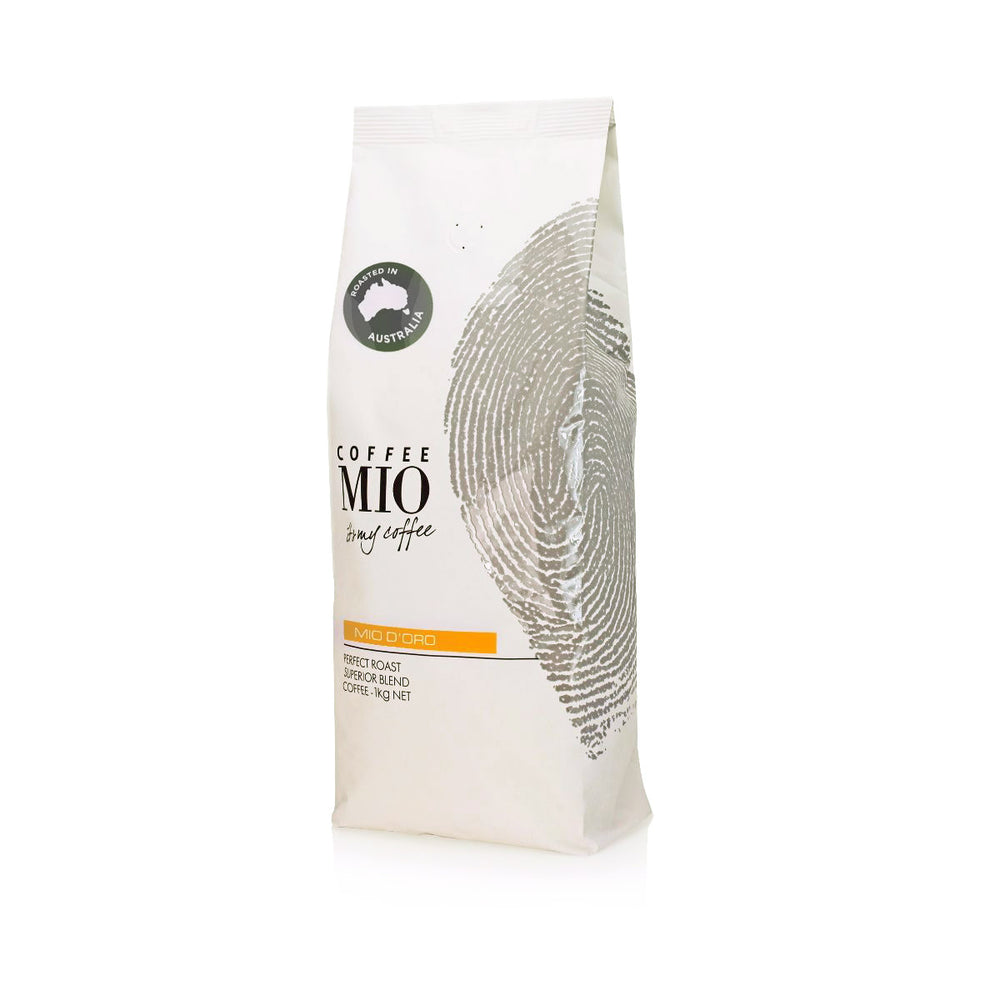
$23.99
5. Filicori Zecchini Gran Crema Delicato
Certified by the Italian Espresso National Institute, Filicori Zecchini’s Gran Crema Delicato is a popular blend of Arabica and Robusta coffees from India, Brazil, and South America. More nuanced and subtle than their other blends, Gran Crema Delicato offers notes of chocolate, vanilla, and roasted grain, with a delicate aroma and well rounded body.

$26.99
What is a Standard Coffee Cup Size?
Another facet of the world of coffee is the cups that it’s served in. A wide variety of cups in different shapes and sizes exist for serving coffee. Ranging from purely ergonomic, to decorative and collectible, the cups you use can have a sizable impact on your enjoyment and on your aesthetic. Regardless of what style you settle on, preheating your cups is one of the most important steps you can take in protecting its flavor.
When it comes to milk drinks, it’s certainly not a one-size-fits-all scenario, with manufacturers like Ancap and notNeutral making a wide array of cups of different shapes and sizes to accommodate the various drinks that you’re able to produce with your machine. As it stands mugs and demitasse cups are among some of the more popular varieties available.Your cups also might affect your decision making when it comes time to choose a machine as well as super-automatic machines have set spout heights, with some being more forgiving than others.




